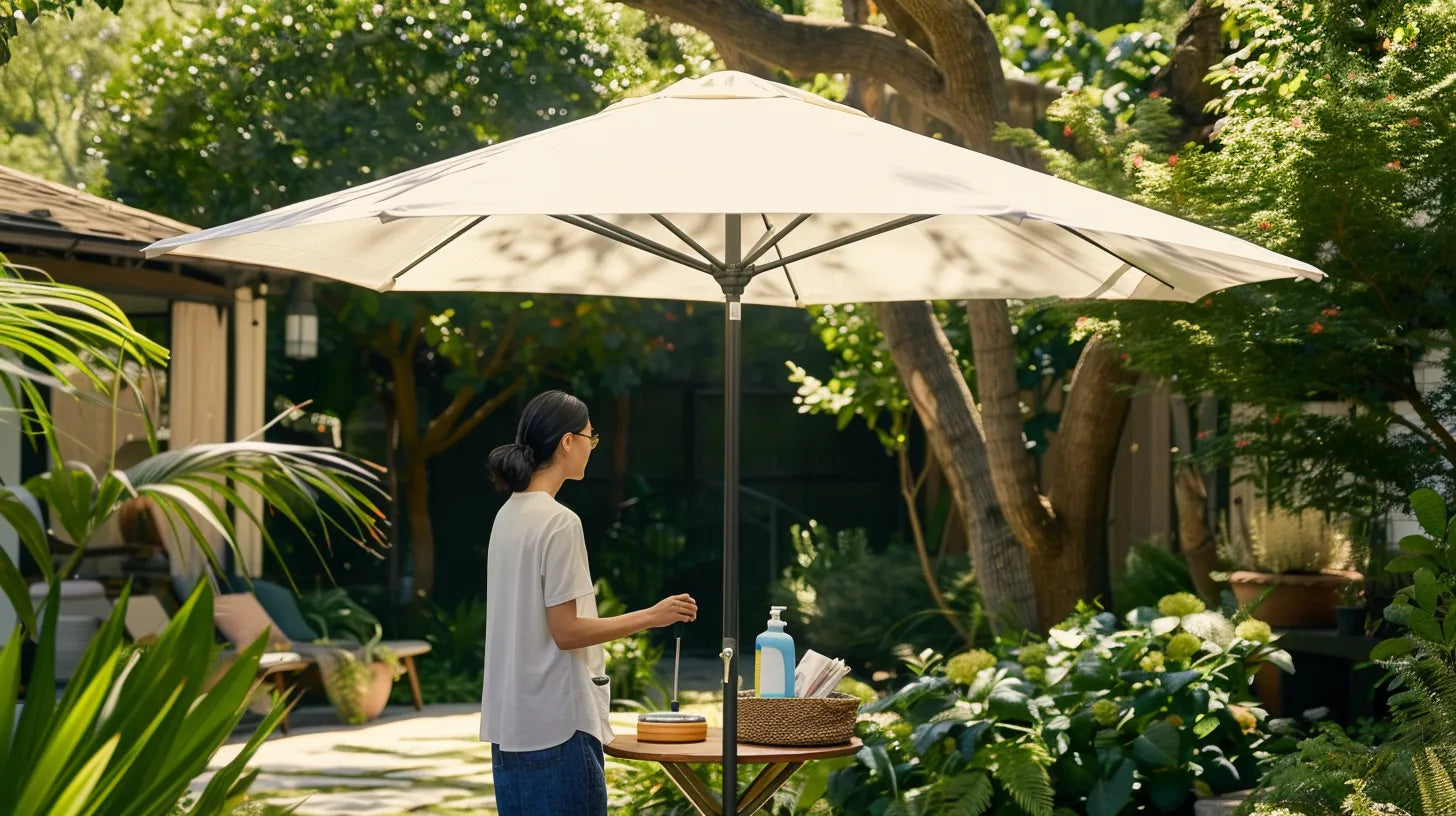Maintaining an outdoor umbrella involves regular assessment for damage and a thorough cleaning regimen to guarantee its durability. Start by inspecting the canopy for stains, mildew, and tears, and examine the frame for rust or loose components. Regularly clean the fabric using a soft brush and mild detergent; for deeper stains, a solution of bleach and water may be necessary after checking the fabric's compatibility . Treat wooden and metal poles with appropriate cleaning agents to prevent corrosion and maintain appearance. Following these guidelines helps in safeguarding your investment from the elements. As you explore further maintenance tips, you will discover additional ways to enhance the longevity and aesthetic appeal of your outdoor umbrella.
Assessing Your Umbrella's Condition
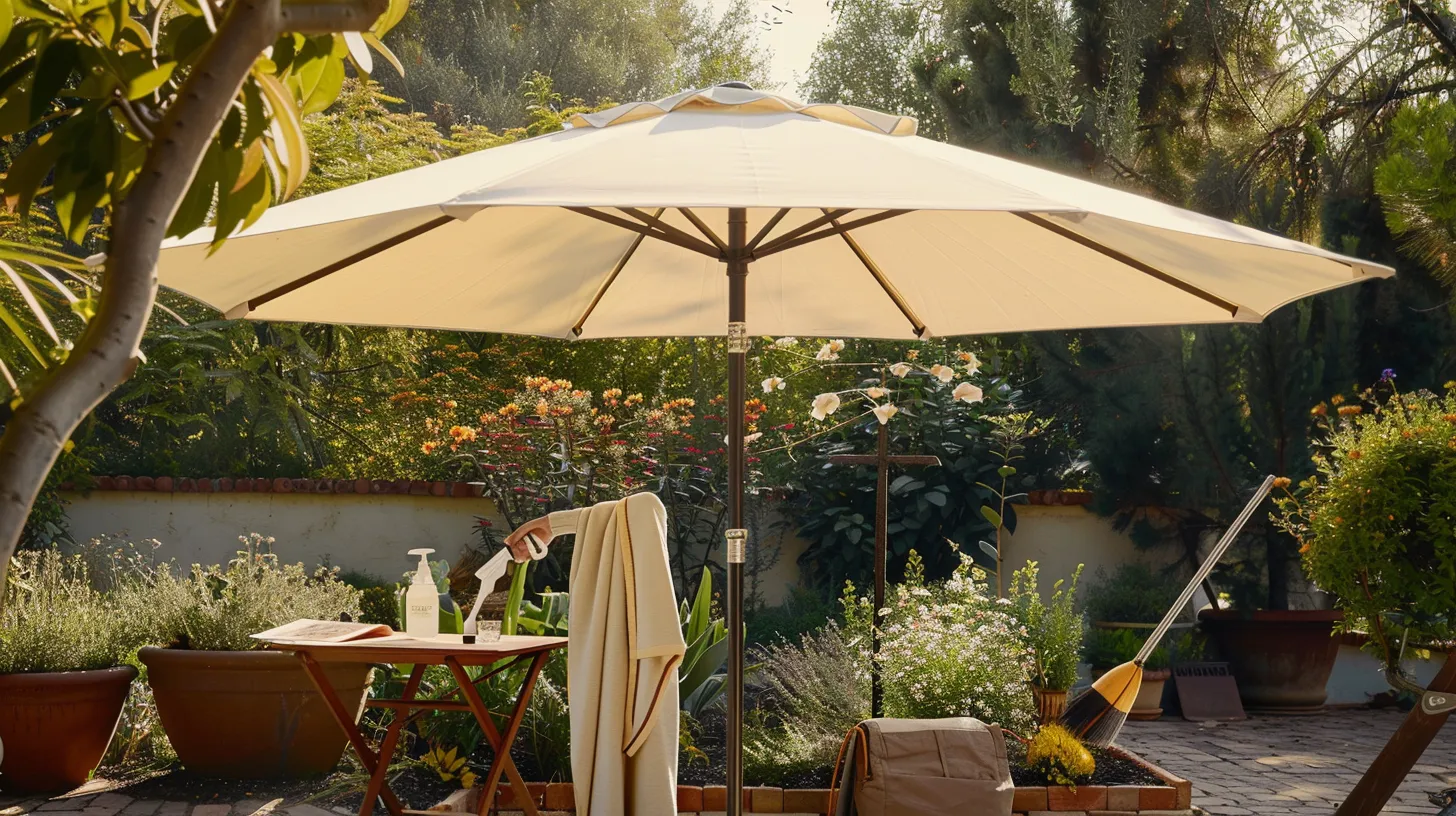
To guarantee the longevity of your outdoor umbrella, start by carefully evaluating its overall condition, closely noting any signs of wear or damage . The initial step in this assessment involves a thorough inspection of the canopy . Check for any tears, stains, or signs of mildew, which could compromise the fabric's integrity and aesthetic. Such issues not only affect the appearance but can also weaken the material, leading to further deterioration.
Next, examine the umbrella's frame. Look for rust, corrosion, or loose screws on metal parts, which are important in maintaining the stability and functionality of the umbrella. For umbrellas with wooden poles , check for any warping, cracks, or discoloration. These defects can greatly affect the structural integrity and necessitate immediate maintenance.
Also, evaluate the mechanical parts that facilitate the opening and closing of the umbrella. Make sure that these components operate smoothly without any hitches . Proper functioning of these mechanisms is vital for both the usability and longevity of the umbrella.
Cleaning the Canopy Fabric
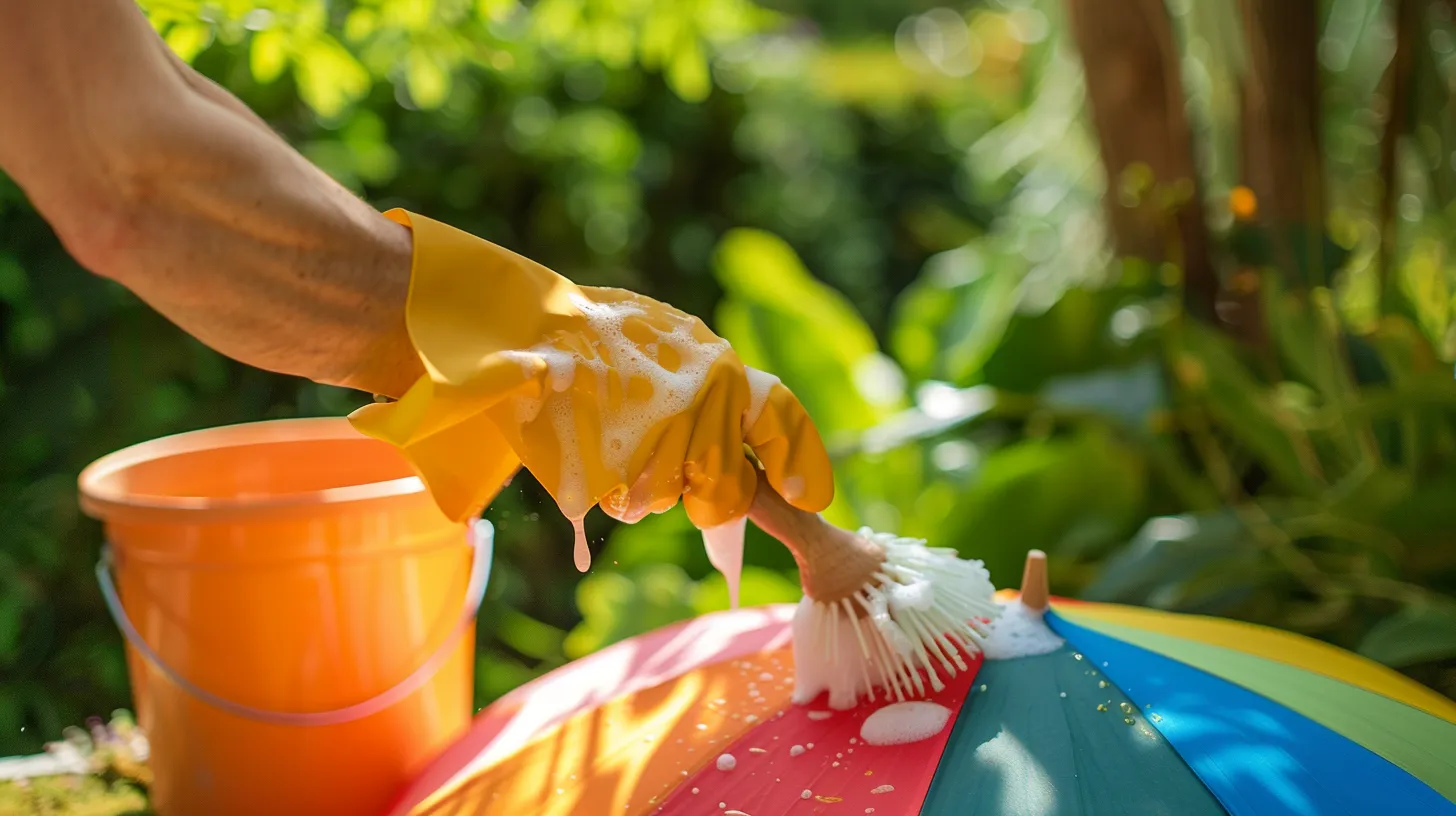
After evaluating the condition of your outdoor umbrella , the next step is to concentrate on cleaning the canopy fabric to guarantee its durability and appearance. Regular maintenance is essential, and it begins with a simple but effective routine: monthly brushing. Using a soft bristle brush , gently sweep away dirt, leaves, and other debris that can accumulate on the canopy fabric. This prevents the buildup of grime that can degrade the material over time.
For more thorough cleaning, especially if your canopy fabric is removable, consider machine washing it on a setting designed for waterproof fabrics. This ensures that the fabric is not only clean but also retains its water-resistant properties . After washing, always air dry the canopy in a sunny area. The natural heat and light help to disinfect the fabric further and restore its vibrant color without the risk of shrinkage or damage that might occur in a conventional dryer.
If there are specific areas with stains, treat them with a spot remover . It's important to first test the product on a small, inconspicuous area of the fabric to make sure it doesn't cause discoloration. For fixed canopies, create a cleaning solution with mild detergent and water to spot clean, followed by ample air-drying.
Tackling Frame and Pole Maintenance
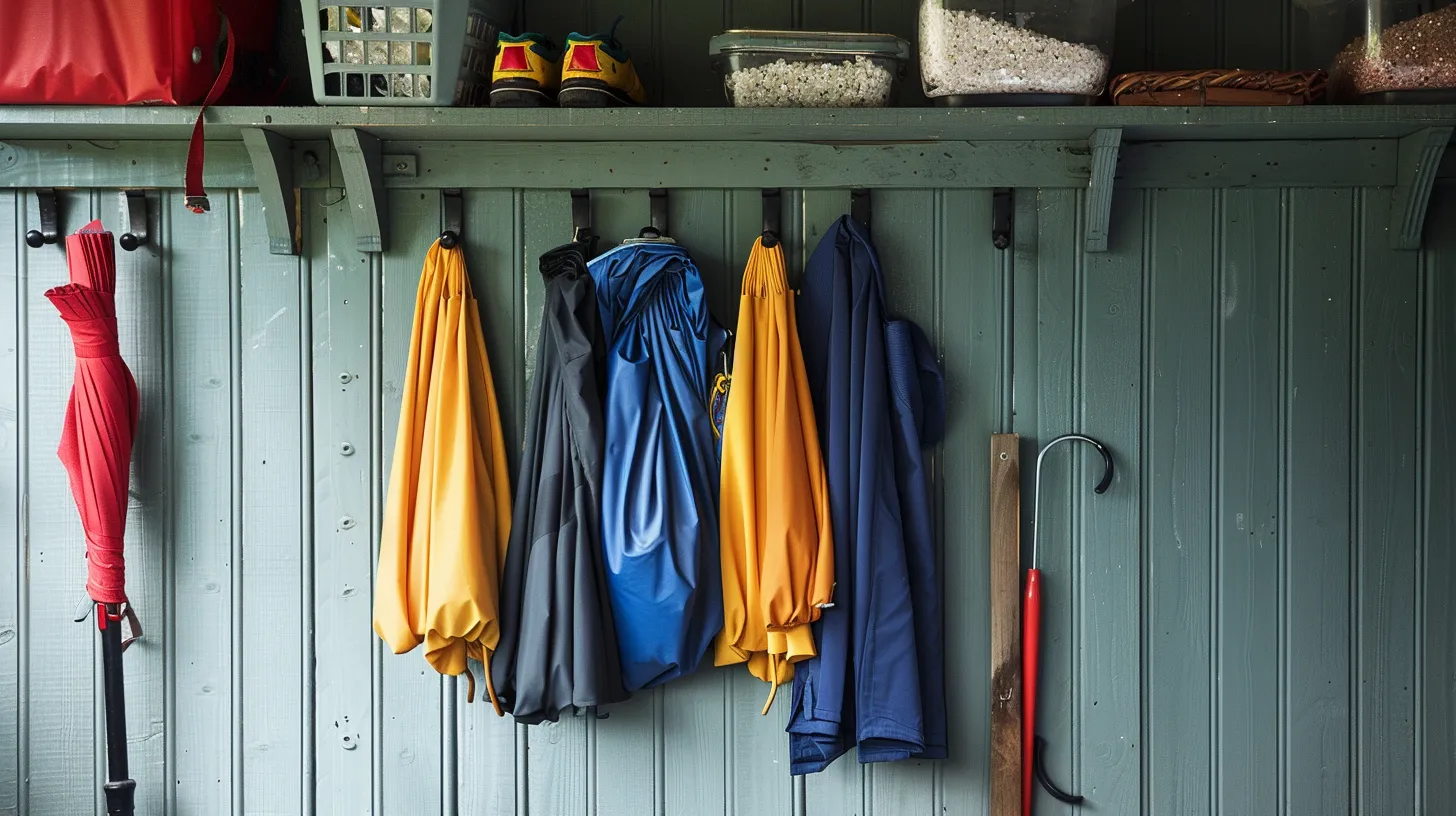
Maintaining the frame and pole of your outdoor umbrella is essential for ensuring its overall stability and longevity. Frame maintenance should be a regular part of your patio umbrella care routine to prevent common issues that can compromise its functionality and appearance. For aluminum frames , which are prized for their lightweight and rust-resistant properties, use a vinegar and water solution to tackle calcium deposits that can build up over time. This not only keeps the frame looking clean but also maintains its structural integrity .
Wooden poles, on the other hand, require a bit more attention due to their susceptibility to weathering. Annually oiling wooden poles helps preserve their natural luster and protects against the elements. Additionally, cleaning both aluminum and wooden poles with a mild detergent and water mixture is effective in preventing mold and mildew formation, a common problem in humid environments.
Lastly, checking for loose screws or bolts is vital in ensuring the umbrella's stability. Regular inspections and tightening any loose parts will help prolong the life of your patio umbrella, keeping it sturdy and functional for years to come. Remember, diligent frame maintenance is key to maximizing the lifespan of your outdoor umbrella.
Removing Mildew and Stains
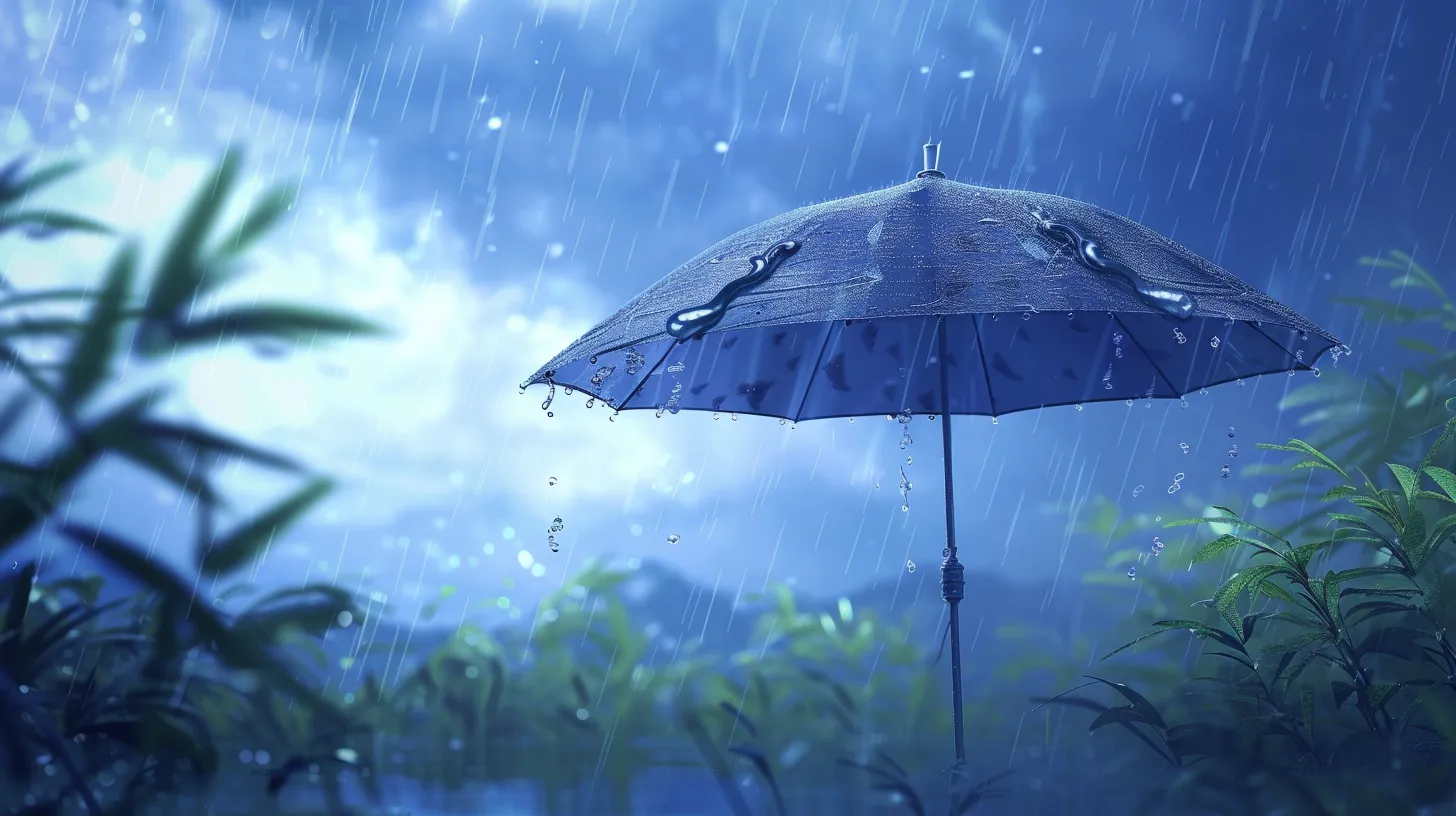
Mildew and stains on your outdoor umbrella can be effectively removed using a specially formulated cleaning solution comprising bleach, mild detergent, and water. Begin by soaking the affected areas with this solution for about 15 minutes , which helps loosen the mildew and stains, preparing them for removal. After the soaking period, gently scrub the spots to guarantee thorough cleaning.
Before applying any cleaning solution, it is vital to check the umbrella's manual or fabric tags to confirm if the material is bleach-safe. This precaution helps avoid damaging the fabric while aiming to clean it. Once the scrubbing is complete, rinse the umbrella thoroughly with clean water to remove any residual cleaning agents . For deeper stains or extensive mildew, consider machine washing the umbrella, if the fabric tags and manual advise that it is safe to do so.
Selecting Appropriate Cleaning Products
Selecting the right cleaning products is crucial for preserving the integrity and appearance of your outdoor umbrella. Opt for products specially formulated for the materials from which your umbrella is made, be it aluminum, wood, or fabric. This approach guarantees that the cleaning agents are safe and effective, avoiding any potential damage that can arise from unsuitable cleaners.
Mild detergents or fabric cleaners are highly recommended as they are gentle on both the umbrella canopy and frame. These products help maintain the vibrant colors and structural integrity of the umbrella without causing fading or weakening of the material. Harsh chemicals , including bleach, ammonia, or abrasive cleaners, should be strictly avoided. They can lead to rapid deterioration of the umbrella materials, resulting in brittleness and discoloration.
Furthermore, consider applying specialized fabric protectors or sealants that are often recommended by the umbrella's manufacturer. These products add a layer of protection against the elements, helping to extend the life and preserve the aesthetic appeal of the canopy.
Always consult the manufacturer's guidelines for recommended cleaning products and procedures. Adhering to these guidelines ensures that the umbrella remains in excellent condition , safeguarding your investment over time.
Drying and Airing Out Techniques
After cleaning your outdoor umbrella , utilizing effective drying and airing out techniques is essential to guarantee its longevity and prevent any moisture-related issues. One of the best methods to make sure your umbrella stays in top condition is air drying it in a sunny area. This not only speeds up the drying process but also helps prevent mold and mildew growth , which can degrade the fabric over time.
To achieve proper ventilation and ensure the umbrella dries uniformly , it is advisable to hang it in an open position. This setup allows air to circulate freely around and through the canopy, facilitating faster drying and reducing the risk of unpleasant odors or fabric deterioration.
It's important to avoid machine drying as it can be harsh on the materials, potentially causing shrinkage and weakening of the fibers.
Regular Operational Checks
Once your outdoor umbrella is thoroughly dried and aired, regular operational checks are necessary to maintain its functionality and safety. For those who cherish their patio space, ensuring the longevity of an outdoor umbrella involves a few essential habits. Perform weekly checks to verify that the umbrella remains securely anchored , a key step in umbrella maintenance that prevents unexpected accidents or damages during windy conditions.
Moreover, regular inspection for loose screws or broken hardware is vital. Such diligence not only enhances safety but also ensures that the structure retains its integrity over time. When opening the umbrella, it's advisable to gently separate each rib. This careful handling prevents the mechanisms from jamming or breaking, thereby extending the life of your umbrella.
Adhering to recommended cleaning procedures also plays a significant role in maintaining your umbrella. Use a mild laundry detergent for general cleaning, which helps in preserving the fabric's quality and protection from the sun without harsh chemicals. Always close the umbrella when it's not actively in use. This simple practice shields the umbrella from overexposure to elements and potential damage, keeping it in prime condition for its next use.
Protective Measures for Storage
To guarantee optimal protection of your outdoor umbrella during off-season storage, it is important to utilize a high-quality cover specifically designed for this purpose. A protective cover not only shields the umbrella canopy from dust and debris but also helps in avoiding any potential damage caused by environmental factors. Before placing the umbrella under cover, make sure it is fully closed and secured . This prevents any unwelcome surprises such as bent frames or torn fabric when you next use it.
It is also essential to perform a thorough cleaning of the umbrella before storage. Mix a solution of water and mild soap with a part of white distilled vinegar to effectively remove any dirt or stains. Using a soft brush , gently scrub the fabric of the canopy, focusing on areas prone to accumulation of pollutants and bird droppings. After cleaning, allow the umbrella to air dry completely in a cool, dry place away from direct sunlight. This step is important to prevent mold and mildew growth on the fabric.
Lastly, consider using a protective base or stand to keep the umbrella stable and upright while in storage. This ensures the structure remains in the best possible condition, ready for use when the season changes.
Handling Wind and Weather Tips
Managing wind and weather effectively is essential for extending the lifespan and maintaining the safety of your outdoor umbrella . For owners of patio furniture, understanding how to shield these items from inclement weather conditions is a critical aspect of care and maintenance. When bad weather, particularly high winds , is forecasted, it is advisable to store outdoor umbrellas indoors to avoid damage. This precaution helps maintain the umbrella's structure and appearance.
In addition to storage, using a high-quality cover can safeguard the umbrella when it is not in use, providing an extra layer of protection against weather elements. Regular checks are also necessary to make sure that the umbrella is securely anchored . This prevents the umbrella from being toppled by gusts, safeguarding both the umbrella and the surrounding area.
For times when severe weather is unavoidable, removing the fabric canopy and storing it separately can greatly prolong its lifespan. It's important to adhere to the manufacturer's instructions regarding wind speed recommendations. Following these guidelines helps minimize the risk of damage, promoting longevity and functionality of your outdoor umbrella in various weather conditions.
Scheduling Seasonal Maintenance
After addressing how to handle wind and weather, it's important to focus on the regular seasonal maintenance required to keep your outdoor umbrella in peak condition. Seasonal maintenance is essential for prolonging the life and enhancing the performance of patio umbrellas. One of the primary tasks is regular cleaning using clean water to remove dirt and debris that can accumulate on the fabric. This not only keeps the umbrella looking good but also prevents mold and mildew from developing.
In addition to cleaning, it's imperative to inspect the umbrella frame for any signs of damage or wear. Catching and addressing these problems early can prevent more significant issues down the road. This inspection should include a thorough check of all components, and you should tighten screws or bolts that may have become loose over time to maintain the umbrella's stability and safety.
Before the harsher weather sets in, it's advisable to store the umbrella indoors . This protects it from extreme temperatures and conditions that can degrade materials quickly. Finally, applying a fabric protector at the start of each season can greatly extend the lifespan of the canopy, ensuring it remains vibrant and resistant to the elements .


